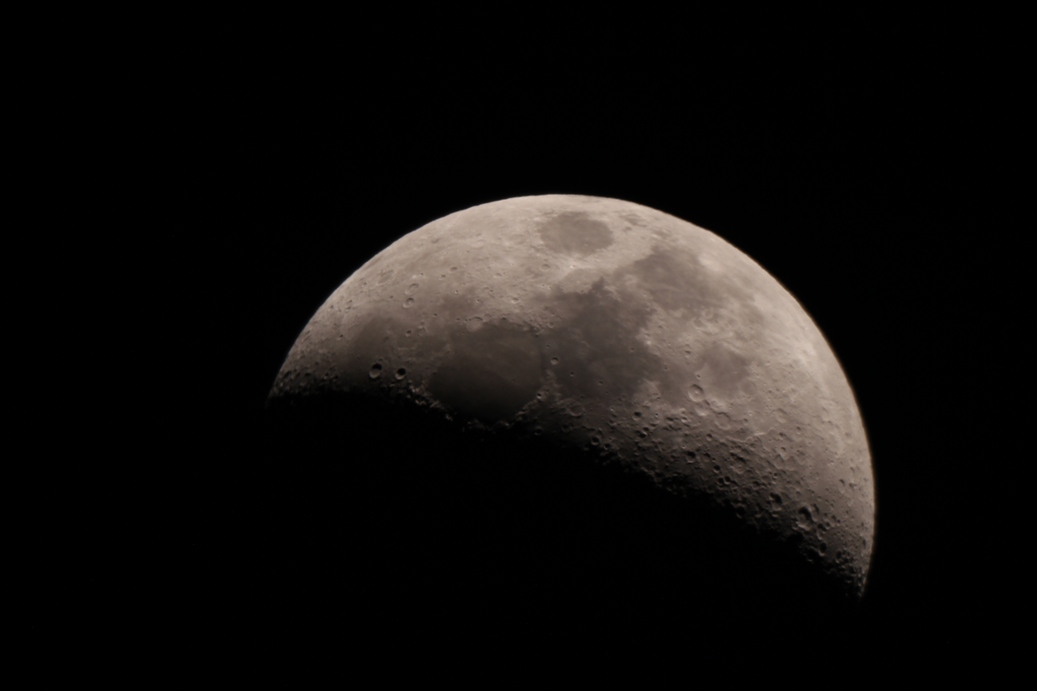The long Summer evenings don’t necessarily mean that observing and imaging are out of the question.
The Moon is still an easy and sometimes overlooked target and yet our natural satellite is still fascinating to look at. We depend on the Moon for our survival and without it we would have unstable seasons, no tides and never be able enjoy the beauty of a solar or lunar eclipse. But how it got there and the question of the Moon’s formation is still the subject of some debate and study. Many theories support the idea that a giant impact on the early Earth formed our Moon, but even then there is much debate about the conditions of such a collision.
This image was taken using a DSLR at the prime focus of a 10″ Dobsonian. The ISO was reduced to 200, the shutter speed to 1/125 of a second at F6, and the seeing conditions were not perfect with a lot of moisture in the air after a rainstorm.
Image credit : Danny Thomas
The Moon is bright enough that a fast shutter speed is required even at high magnification. This means guiding is not required, so set up can be very quick and almost point and shoot.
The high resolution of modern digital cameras lets you zoom into the Moon to get a detailed look at the craters, rilles and mare. The shadows near the terminator between sunlight and darkness give the image a real sense of 3D.
You don’t need a big telescope to observe the Moon and for imaging all you need is a way of hooking a camera up to a telescope.
So why not enjoy some fair weather observing?
By Danny Thomas
June 2014

